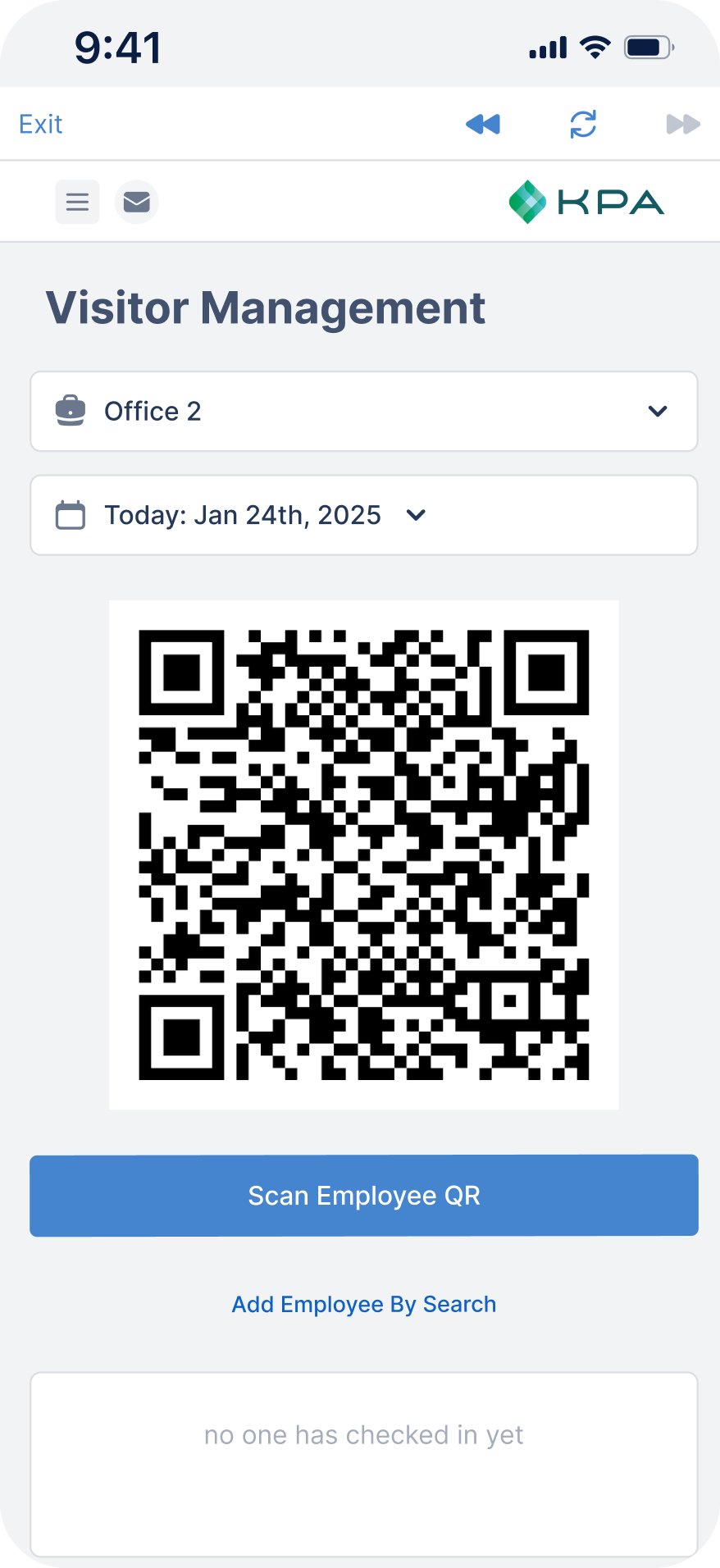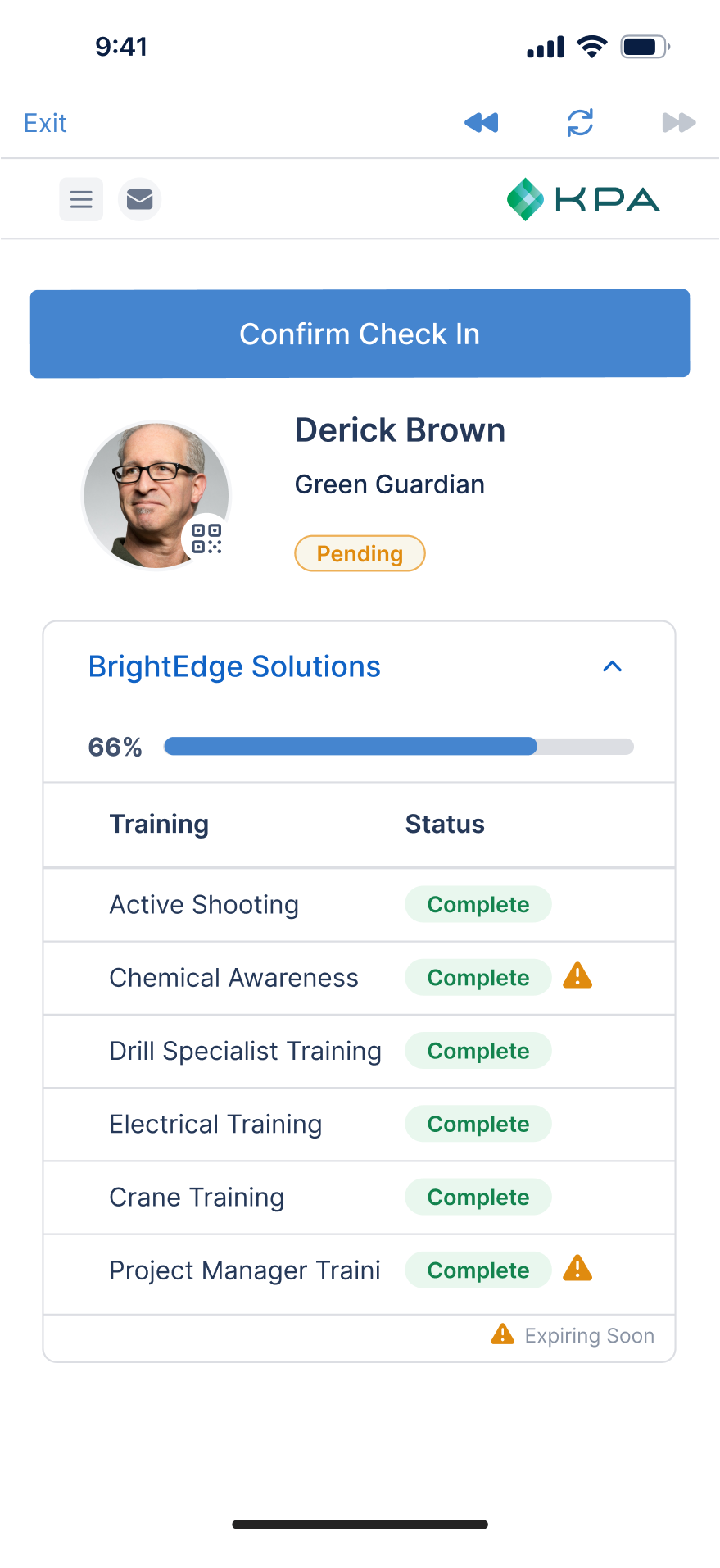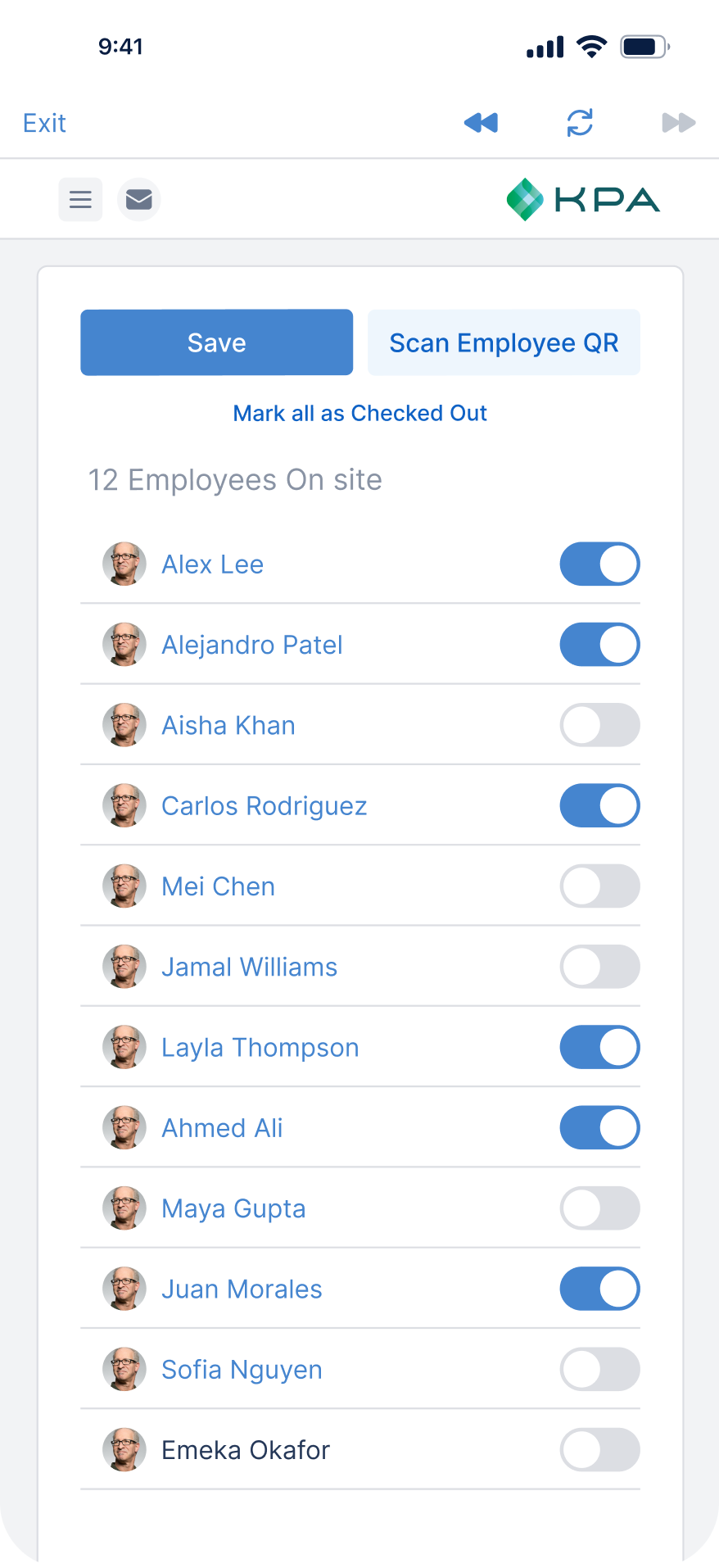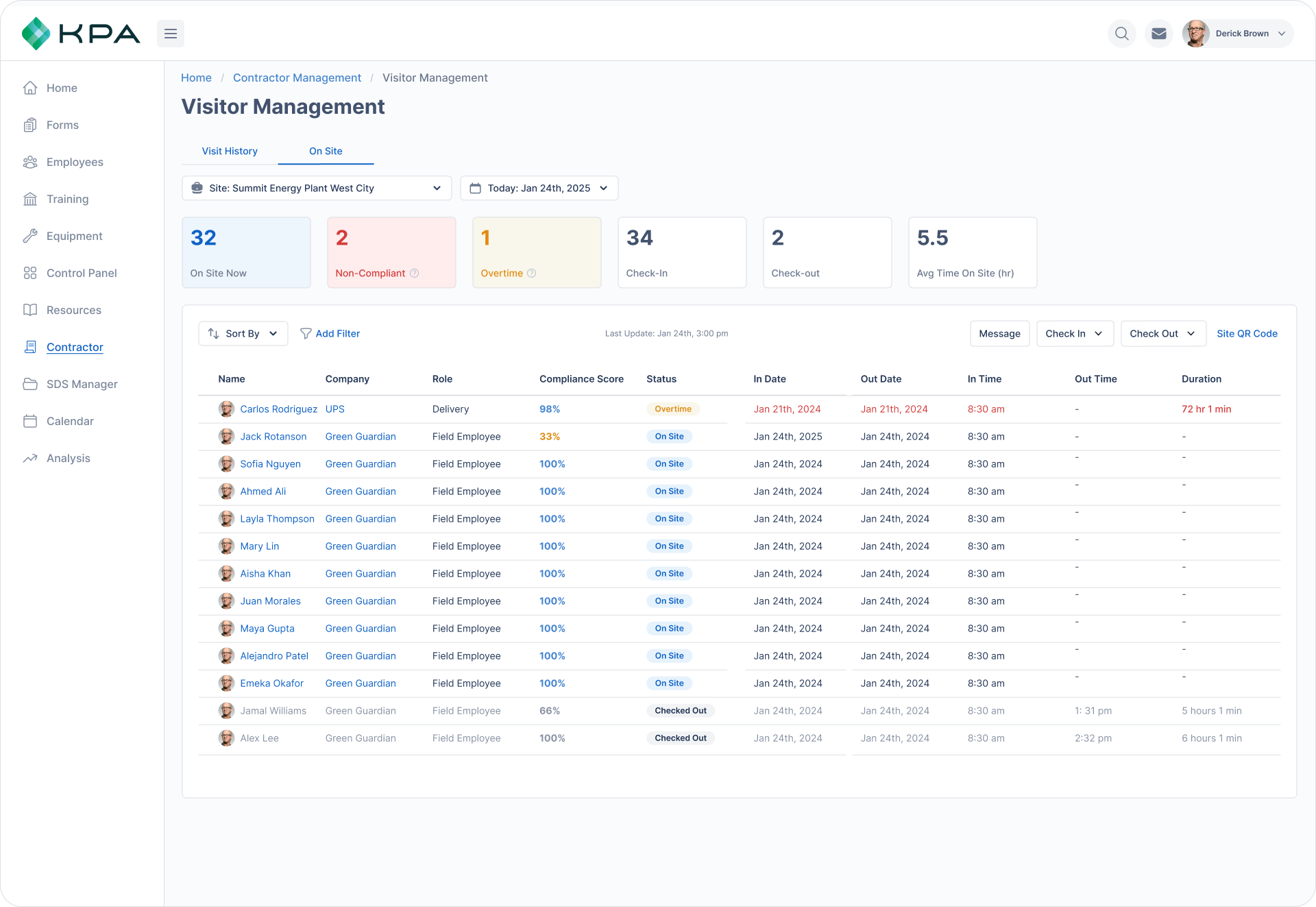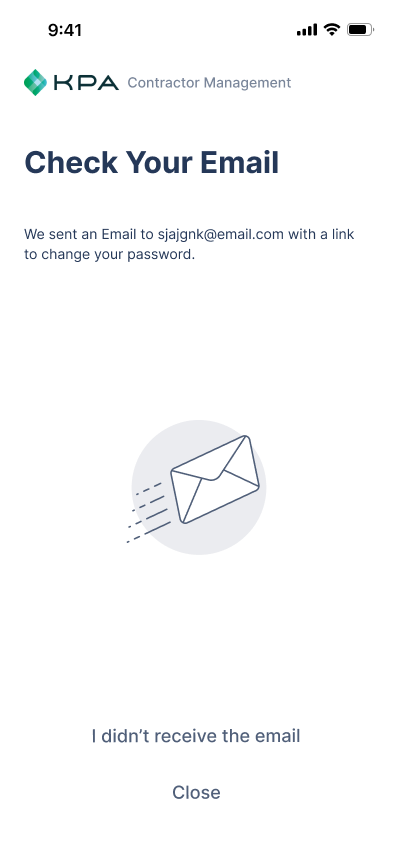Visitor Management
Good Design Takes A Village
Context
In hazardous industries, safety begins at the gate. Knowing who’s on-site, why they’re there, and whether they’re qualified is essential.
Today, many companies still rely on pen-and-paper sign-ins, badge handoffs, or makeshift spreadsheets to manage site visits. These outdated workflows slow things down and introduce real safety risks.
Our team saw an opportunity to improve both the experience and operational efficiency with a Visitor Management feature—one that would help safety professionals control access, stay compliant, and keep everyone safe. But this wasn’t a solo mission. From day one, this project was a collective effort across users, PMs, engineers, data architects, and industry experts.
Design Problem
Safety professionals need a reliable way to control and monitor access in real time, while visitors need an intuitive way to check in, prove they’re authorized, and receive important updates—without unnecessary friction.
Solution
A comprehensive Visitor Management solution. This solution had to flex across industries and work for both high-security sites with a guard at the gate and more open environments with self-managed access.
A flow for gate guards to quickly check visitors in and out
A self check-in/check-out experience for visitors
Real-time visibility into who is currently on-site
Discovery & Research
I partnered with our Product Manager early on to dig into user needs. We reviewed support tickets, and interviewed users remotely and in the field. We also regularly consulted our subject matter experts (SMEs), many of whom had firsthand experience in oil & gas, manufacturing, and construction.
Some of the companies we spoke to:
We found
Verification is critical
“We need to verify identity, training status, and certifications. Some visitors need to sign NDAs or show government-issued IDs.”
Communication must be accessible
“Our field crews don’t use apps—texting is more realistic.”
Manual processes create risk
“Our receptionist prints out a sign-in sheet… we can’t read half the names.”
“Check-out is a mess. People leave out the back door and we have to chase them down.”
Real time Visibility is Crucial
“I need to know who’s on-site so I can make sure everyone is counted for and safe for an evacuation or chemical leak.”
These insights became the foundation for our design.
These insights became the foundation for our design.
Different sites require flexible solutions
“Some sites have guards; others don’t. You can’t count on there being a person at the entrance.”
Design Evolution
Initial Concept: Project-Based Structure
My first design proposed organizing visitors by “Projects,” which tied into existing contractor flows. It worked well for construction—but once we walked it through with SMEs, it became clear this model didn’t map to oil & gas or manufacturing. Those industries center around sites, not projects.
Pivot: Site-Centric, Data List Model
We shifted to a more flexible Site → Live Visitor Info structure. This model:
Worked across industries
Felt familiar to SaaS users accustomed to data tables
Allowed for future scalability (truck drivers, vendors, etc.)
This pivot came directly out of conversations with experts and users—and was a great example of collaborative iteration in action.
Engineering Collaboration - Security Redesign
While prototyping the login and check-in flow, our data architect flagged a security vulnerability.
the original flow exposed whether:
a user existed,
a user was an admin
a user had completed a sign on process
These information could be used maliciously.
why is it descoped
While being able to manage and create a pre check in list helps organization, what’s more important is recording the live on site status
why is it descoped
Together, we redesigned the flow to eliminate these signals while maintaining a smooth user experience.
Instead of providing information on admin’s identity right away, we are re-directing admin user to their associated email inbox to prevent sensitive information being exposed.
Product Collaboration - Descoping per timeline
During the process of designing and figuring out what we want to bring to the market, there is always an urge to deliver a “Perfect” product that solves all the use cases, covers all the edge cases, includes all the bells and whistles. However, what I’ve learned from experience so far is, the most effective way to gauge market’s perception and reaction is through interaction with the market. A perfect product will never be shipped, an ever evolving and iterative solution is the one that’s in the market solving user’s problems and bringing revenues for business.
A big part of this process is descoping and cutting non-essential functionalities.
GPS auto locator helps with accuracy and convenience, but the location can be entered by form submitter easily, so we want to line this feature up for future iteration.
why is it descoped
Badge printing is requested by a few testers, however, we decided to descope it for this release because there’s easy workaround.
Testing & Delivery
We tested remotely and in-person with safety managers and visitors at various sites. With limited dev bandwidth, we had to be strategic. I worked closely with PMs and engineers to prioritize the highest-impact workflows and de-scope lower-risk features to ship on time.
Our MVP delivered:
A secure, flexible check-in system
Real-time visibility into visitor presence
A better experience for both safety professionals and visitors
We released early to gather real-world feedback—confident in the core experience, and ready to evolve with our users.
Reflection
I used to think good design came from the brilliance of a single designer. But after two years in a Research & Development org, I’ve learned that truly great design emerges from something much bigger: a team effort driven by care, challenge, and collaboration.
Each discipline brings something vital to the table—engineers, product managers, designers, data architects, and subject matter experts. And it’s often the natural tension between these perspectives that pushes the designer to find the best solution. Finding solutions that satisfy technical constraints, user needs, and business goals requires give-and-take, clear communication, and a shared pursuit of excellence.
Only when everyone contributes, speaks up, is heard, and strives toward the same high standard can a design that is delightful, effective, and secure truly be created and shipped.
Good design takes a village.


